Musée d’art Sungkok (성곡미술관)
1.3Km 2021-02-16
42, Gyeonghuigung-gil, Jongno-gu, Seoul-si
+82-2-737-7650
Le musée Sungkok est une galerie d’art construite par la corporation coréenne Ssangyong, dans le but de promouvoir l’art coréen. Pour les écrivains talentueux, une exposition individuelle peut avoir lieu.
Pour le développement de l’art en Corée, il y a le calendrier des expositions. Enfin, il y a aussi une exposition internationale, dans le but de maintenir un lien avec le courant des arts provenant de l’étranger. Or ces dernières représentent plus de 15 expositions par an.
On peut approximativement diviser la galerie en 2 parties: la partie principale où se tiennent les expositions et l’annexe où se trouvent diverses facilités.
Dans le parc des sculptures, une centaine d’arbres d’espèces varies, de plusieurs décennies forment une forêt. Cet assemblage, arbres et sculptures, trouve aussi son sens artistique. Dans ce bois, il y a un chemin que vous pourrez suivre afin de découvrir cet espace de 7,450 m2. Sculptures de grands artistes coréens et étrangers ne font qu’harmonie avec la nature.
Dans le cas où vous souhaiteriez acheter un objet artisanal à un prix raisonnable, il y a une boutique d’objets d’art au sein du bâtiment principal. Certains produits viennent du musée et d’autres viennent d’artistes reputes; lieu où vous pourrez trouver nombre de petites choses qui font plaisir.
Après le musée, vous pouvez vous reposer dans la maison de thé. Cette dernière peut vous offrir une délicieuse tasse de thé que vous apprécierez encore plus devant la beauté de chaque saison qui teinte le parc des sculptures. Au printemps, la fraîcheur des senteurs de la nature, l’été, la forêt vivifiée, l’automne, le changement des couleurs et l’hiver, la blancheur de la neige. Des tables en terrace vous attendent.
Peut-être désirerez-vous vous arrêter, souffler et respirer l’air frais, contemplant votre voyage et votre vie. La maison de thé vous propose une variété de thés, cafés et cookies. Les spécialtés de la maison sont le thé au citron et les cookies aux noix, nous vous les recommandons.
Seoureseo Duljjaero Jalhaneunjip (The Second Best in Seoul) (서울서둘째로잘하는집)
1.3Km 2020-06-16
122-1, Samcheong-ro, Jongno-gu, Seoul
+82-2-734-5302
The delicious, sweet, red-bean soup called “Danpatjuk” in Korean and served at “The Second Best in Seoul” has been an all-time favorite since it opened in 1976. Not only the exterior, but the interior as well, is very simple and modest, similar to a teahouse in the '70s. This does not keep people from coming back because the unforgettable taste of the sweet red-bean soup makes them return again and again.
“The Second Best in Seoul” was originally opened as a teahouse for traditional Korean medicinal tea; sweet red-bean soup being one of the main specialties on their menu list. But, nowadays, sweet red-bean soup has become the most popular menu item. Sweet red-bean soup can be enjoyed as a light meal because it fills you up quickly. In addition, the chestnuts, gingko nuts, red beans, and glutinous rice cake that are in the thick red-bean soup provide good nutrition.
TIP: The name is very special, right? “The Second Best in Seoul” was named by their modest mind of making food with utmost sincerity.
Jalppajin Memil - Seochon Branch (잘빠진메밀 서촌)
1.3Km 2021-03-18
41-1, Jahamun-ro, Jongno-gu, Seoul, Korea
+82-70-4142-1214
This is a Korean cuisine located in Jongno-gu, Seoul. A restaurant that uses noodles made with 100% buckwheat directly by the chef. The best menu at this restaurant is dumpling hot pot.
Seochon Guest House [Korea Quality] / 서촌 게스트하우스 [한국관광 품질인증]
1.3Km 2023-04-07
28-3, Jahamun-ro 7-gil, Jongno-gu, Seoul
+82-010-3345-9680
Seochon Guest House is located in Seochon, which is becoming a hot place for tourists in Seoul, and precisely on the road to Suseong Valley, whichis filled with interesting stores and is also well-known for Park Nosoo Art Gallery and the House of Yun Dong-ju (poet). Seochon Guest House is nicknamed ‘Jaeminangol (interesting village)’ after Baekseok’s poem ‘Yeowunangol’, with the aim of providing a visit full of interesting experiences. Passing through a garden and entering the main building, the unique charm of this hanok building, the staircase to get to the first floor from daecheong (main floored room), catches the eye of the visitors. In addition, the building is decorated with various stylish objects including paintings and Korean musical instruments. The terrace situated on the first floor offers an open view of the surrounding area including roof tiles of hanok structures and alleyways in Seochon. It is said that Korean novelist Yoon Hu-myeong also appreciated the structure of the guesthouse, saying, “It is an interesting place.” Built in the 1930s, the house, which has many storage places, was taken by the owner couple in spring 2014 as they were attracted by the house during their trip to Seochon. After the repair work, the ground floor of the house was opened for guests from January 2016, hoping that guests could share their daily experiences and stories with each other. The guestrooms and the main floored room on the ground floor are open to guests, with the exception of the first floor, which is used by the owner couple. The living room is equipped with books, a curved TV, and a table. The tasty meal, which is served in the kitchen, consists of rice and soup with six side dishes and is much loved by guests. The guesthouse offers a total of four rooms – Jae Room, which is the most Korean-style room; Mi Room, which has a combined style of a Korean-style room and Western-style room; Nan Room, which is an ideal room for meditation with a beautiful paper window; and Ahn Room, which is equipped with a veranda and a pretty flowerbed. Every room has its separate charm with various comfortable bedding to provide a quiet and cozy bedroom for guests in the middle of the city. Furthermore, the guesthouse holds a pansori (epic chant) performance twice a year. The owner started learning how to sing pansori to promote the Korean culture and tradition to foreigners. When a pansori performance is held, the owner offers traditional Korean snacks and drinks including sikhye (sweet rice punch), sujeonggwa (cinnamon punch), traditional sweets and cookies, and tteok (rice cakes) to visitors, tourists, and performers. Moreover, it provides cultural programs such as a Gukak (Korean classical music) experience, Korean traditional clothes experience, and making Korean food experience, as well as other activities with guests, such as trip to the city wall between Inwangsan Mountain and Bugaksan Mountain, and the Royal Palace Tour to Gyeongbokgung Palace, etc., as well as a trip to a traditional market.
THE SIC-DDANG - Myeongdong Branch (더식당 명동)
1.3Km 2021-03-20
36, Myeongdong, 10-gil, Jung-gu, Seoul
+82-2-318-2234
A store where you can enjoy both Korean and Western dishes as a restaurant frequently featured in Korean gourmet programs. The best menu at this restaurant is lobster. This Korean dishes restaurant is located in Jung-gu, Seoul.
Hanu Samgyeop (한우삼겹)
1.4Km 2021-03-24
31, Myeongdong, 4-gil, Jung-gu, Seoul
+82-2-318-0028
You can enjoy freshly aged meat. This restaurant's signature menu is grilled pork belly. This Korean dishes restaurant is located in Jung-gu, Seoul.
Enceinte de l’ancienne légation russe (구러시아공사관)
1.4Km 2020-06-18
21-18, Jeongdong-gil, Jung-gu, Seoul-si
+82-2-3396-5882
La légation russe a été bâtie dans le style de la renaissance en 1890. C’est l’architecte russe A. J. Scredin Sabatine qui en a conçu la structure. En 1895, à l’époque de la dynastie Joseon, a eu lieu l’incident de Eulmisabyeon, pendant lequel le Japon a fait une démonstration de force. Alors que des luttes de pouvoir éclataient entre le Japon, la Chine, la Russie et d’autres puissances, l’Impératrice Myeongseong-hwanghu émergeait en tant que personnalité forte de la Corée. Elle était considérée comme une menace par le Ministre japonais Miura Goro, qui a donc ordonné son assassinat. Après avoir appris la nouvelle de l’assassinat de l’Impératrice, le roi Gojong et le prince héritier ont trouvé refuge dans l’ambassade russe pendant un an.
Après 1945, l’Union Sovétique a réinvesti l’ambassade, jusqu’à ce qu’elle soit presque entièrement détruite durant un incendie pendant la Guerre de Corée (1950-1953). Les seules parties rescapées sont la tour et les sous-sols. Le bâtiment a été restauré dans son état actuel en 1973 et c’est à présent un jardin public très apprécié.
Seoul Animation Center (서울 애니메이션센터)
1.4Km 2020-07-08
Seoul, Junggu, Sogong-ro 48
Le Centre de l'animation à Séoul a été inauguré par la ville de Séoul en mai 1999 afin de promouvoir la culture des animes en Corée. Le centre propose divers programmes ludiques et divers événements tout au long de l'année pour promouvoir les nouveaux talents.
Honbap Star (서촌막회센타)
1.4Km 2021-03-24
49, Jahamun-ro 1-gil, Jongno-gu, Seoul
+82-10-9018-6349
This is a raw fish restaurant known for its cost-effectiveness. This Korean dishes restaurant is located in Jongno-gu, Seoul. The representative menu is sliced raw small fish.
Marché Gwangjang (Boutiques de Hanbok) (광장시장 한복매장)
1.4Km 2019-09-16
88, Changgyeonggung-ro, Jongno-gu, Seoul-si
+82-2-2267-0291
Contrairement à d'autres marchés du genre, celui de Gwangjang a réussi à préserver sa riche histoire et à maintenir son côté traditionnel, refutant toute modernisation. Tenu par des marchands au bon coeur incarnant la générosité du peuple coréen, le marché est un excellent endroit pour déguster de délicieux plats et acheter des produits variés pas chers.
br>
Ses boutiques de hanboks sont spécialisées dans les hanboks traditionnels plutôt que dans les modernes, que l'on pense plus pratiques que leurs homologues traditionnels. De superbes tenues sont disponibles à -30% par rapport aux prix demandés.
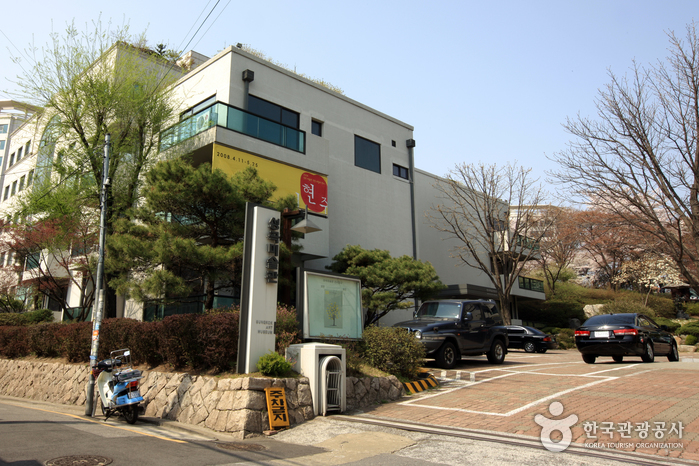
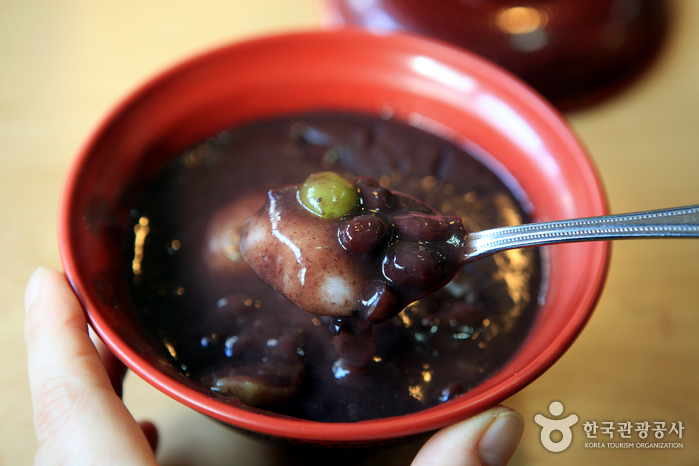
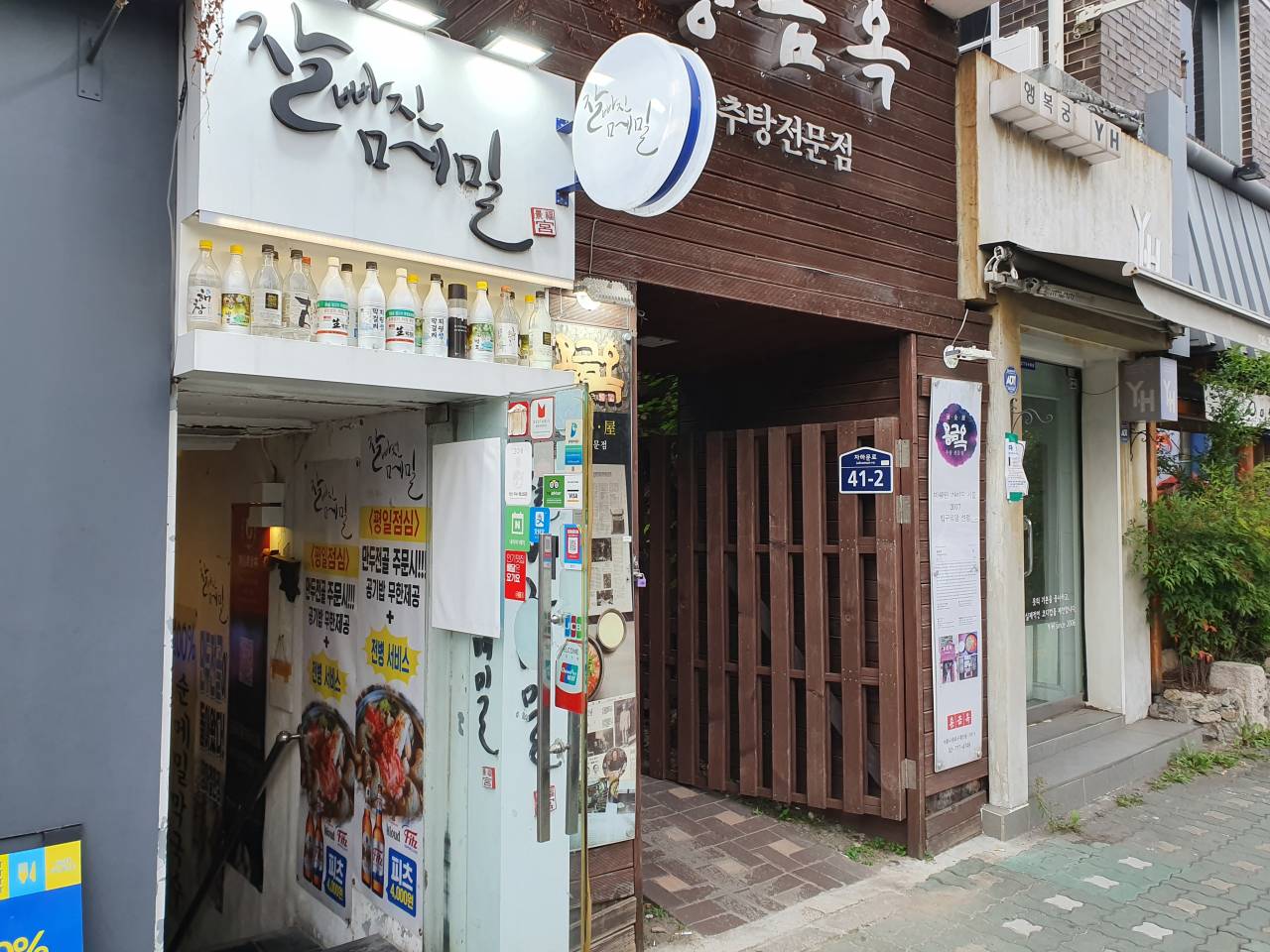
![Seochon Guest House [Korea Quality] / 서촌 게스트하우스 [한국관광 품질인증]](http://tong.visitkorea.or.kr/cms/resource/41/2447241_image2_1.jpg)
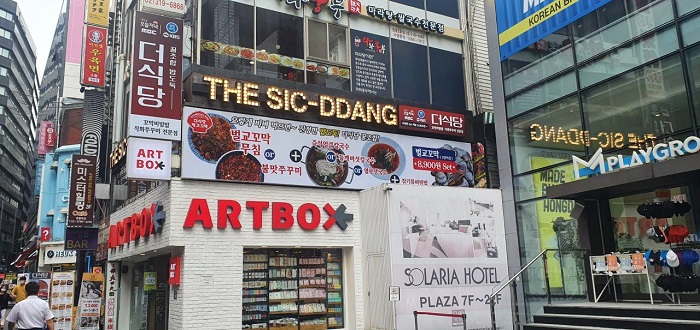
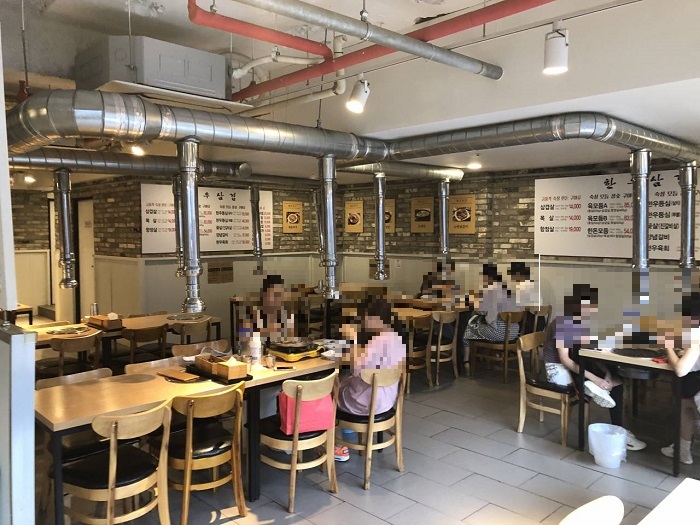
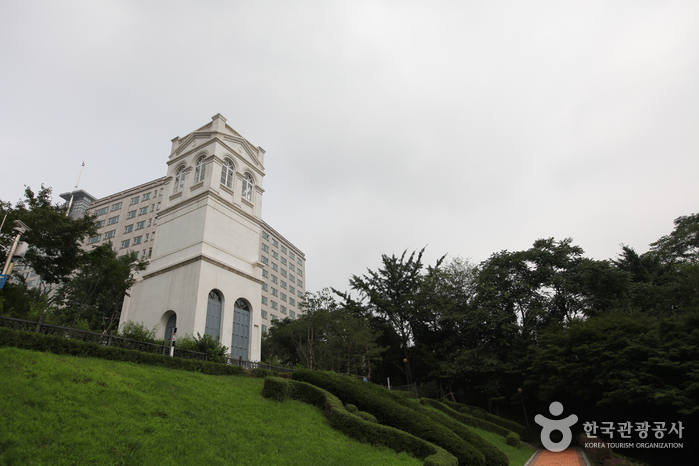

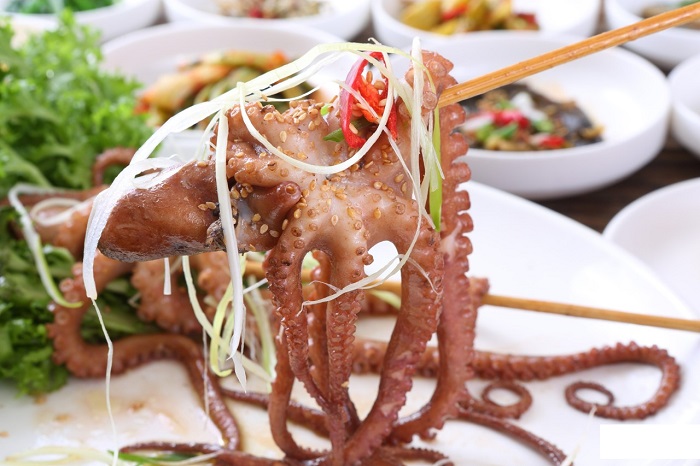
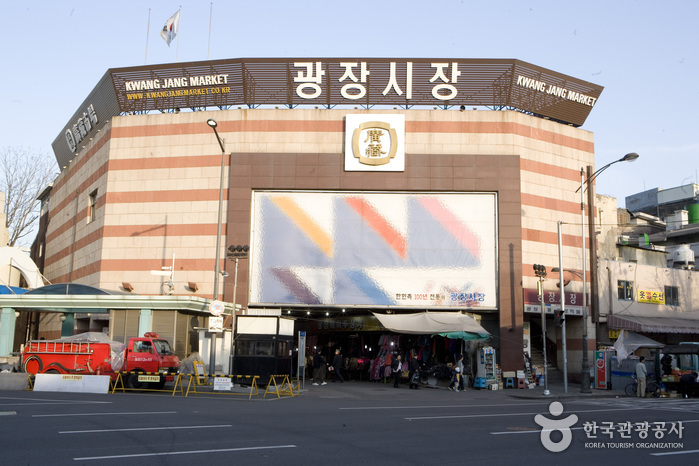
 Français
Français
 한국어
한국어 English
English 日本語
日本語 中文(简体)
中文(简体) Deutsch
Deutsch Español
Español Русский
Русский